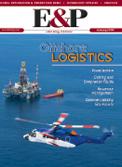
E&P Magazine - January 2009
As I See It
As I See It:Whence in 09?
The second half of 2008 was one for the record books.
Exploration Technologies
Learning from past mistakes
When the Great Crew Change meets the Great Recession, it makes for some interesting demographics.
Drilling Technologies
Tightening the gap
Within the next generation of drilling and completion efficiencies, a merger between these processes will play an essential role in improving overall operations.
Completions and Production
America is on the wrong track
Respondents to a survey conducted by Deloitte LLP’s Oil & Gas industry group have weighed in on a number of subjects, including their views on energy, with 79% of them saying the nation’s energy situation is in worse shape now than it was five years ago.
Current and future prospects for stripper wells
About 18% of US domestic oil and 9% of US natural-gas production comes from low-production-rate wells. With commodity prices falling, what lies ahead for these mighty mites?
Rethinking emergency evacuation strategies
Following recent developments in the offshore industry, the time could now be right for operators to review their emergency transfer options and take a more comprehensive approach.
Digital Solutions
Oil field IT: New directions, emerging challenges
Horizons are expanding for information technology use as a means to improved productivity in the petroleum industry. In some cases, validation comes from other industry applications. Yet further progress, across industries, could be slowed by growing cyber threats.
Features
Bigger can be better
The world’s largest LNG carrier offers significant economies of scale over its smaller predecessors.
CGL technology monetizes stranded gas
Based around what is literally a mobile pipeline, a new compressed gas liquids transport concept brings the full gas stream from remote wellheads to market in one stroke.
Gearing up to go the distance
The oil and gas industry has been aware of the constrained offshore rig market for some time, but unbeknownst to many, helicopter service providers are fighting the same battle in the air.
Intelligent completions for better reservoir management
First conceived as alternatives to costly or technically difficult interventions, intelligent wells that can be monitored and controlled remotely have evolved into a powerful reservoir management tool. As a result, after initially slow industry-wide uptake, their number is projected to increase fivefold in the next five years.
Lower risk by logging through the bit
Finding new ways to drill for unconventional reserves and lowering overall costs means ‘doing more with less’ by using more efficient technologies.
New OSVs move function from supply to support
The move to deeper water has required more specialized and technically sophisticated vessels to support complex deepwater field developments. As a result, today’s offshore support vessels are a far cry from their predecessors.
Pills ease fluid loss headaches
To save money and minimize nonproductive time during a completion, the ideal fluid loss control system should be ready when it’s needed.
Proactive breakthrough prevention
Improving openhole completions with inflow control devices and swellable zonal isolation can be the means to avoiding problems associated with early water and gas breakthrough and resulting reduced oil production.
Rapid model updating allows right-time decision-making
Today’s 3-D geological models not only provide the tools for incorporating accurate characterizations of reservoir heterogeneity, but also enable multiple scenarios to be quickly built and analyzed to help quantify the inherent reservoir uncertainty.
The case for visualization
It’s beyond anecdotal — large-scale visualization centers provide solid return on investment.
Visualization comes of age
Affordable Windows-based geoscience software continues to make rapid advances.
Tech Trends
New concept offers construction alternative
Strained yard capacity has led to innovation. A new approach to construction could be a viable option for building deepwater floaters, allowing construction to move ahead outside backlogged conventional yards.
Tech Trends
Tech trends for January.
On The Move
On the move
Who's going where in the upstream sector.
Last Word
Is NACE MR0175/ISO 15156 becoming irrelevant?
In recent years the petroleum industry has had to drill and complete wells in ever deeper reservoirs. Today, many high-pressure/high-temperature wells are encountering pressures greater than 15,000 psi with temperatures greater than 350?F (177?C).
Activity Spotlight
Uruguay’s fresh ground
In early December, Uruguay Energy Ministry and ANCAP launched the country’s first offshore licensing round for exploration and production of oil and gas.
Another Perspective
Oil industry’s dangerous mixed messages on peak oil
Misperceptions about global hydrocarbon resources could have enormous repercussions.
Management Report
Management strategies for avoiding blowouts
Shaving thousands of dollars off expenses may look smart to an oil and gas operator or contractor, right up until catastrophe strikes. One major blowout can cost millions of dollars, easily outstripping insurance limits and sometimes even putting a company out of business.
News & Analysis
News and Analysis
January News and Analysis.
Oilfield History
An Alaskan legend
One man’s innovative individualism and intuitive skepticism can sometimes surpass the benefits of so-called conventional wisdom.
